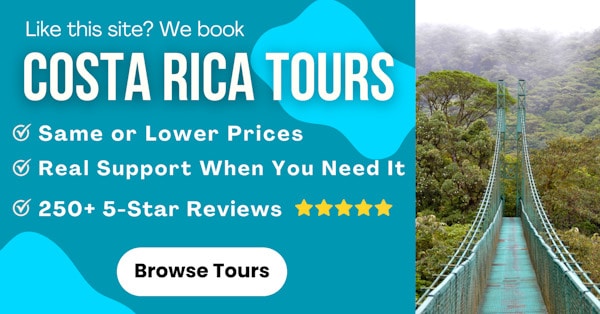Last Updated: September 11, 2025
Seeing glowing bioluminescence in person is one of those things in nature that just makes you go, wow! Witnessing it in Costa Rica, on a kayak in the dark under the stars makes the experience even more special. It’s definitely one of the most unique things to do in Costa Rica. In this post, we’ll give some background on bioluminescence in Costa Rica. We’ll also tell you about a bioluminescent kayak tour we took in Paquera on the Nicoya Peninsula.
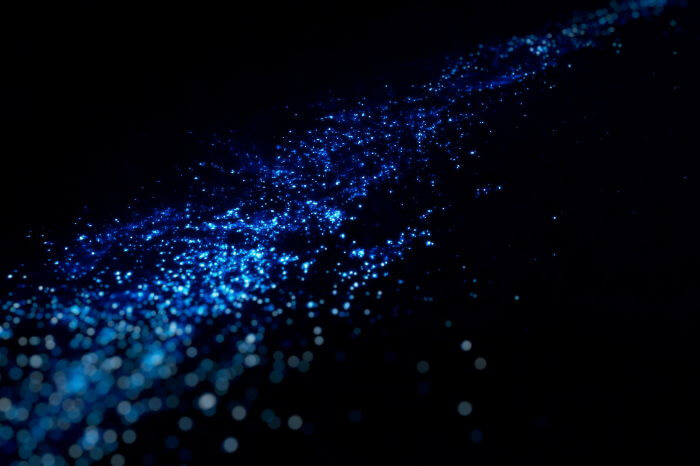
What Is Bioluminescence?
Bioluminescence is when living things give off a natural light or glow. You’ve probably experienced it when seeing fireflies (lightning bugs), but it also can be found in mushrooms, jellyfish, worms, and other creatures. It can be somewhat magical or somewhat creepy (in the case of worms).
Water also can give off a bioluminescent glow, but it is not from the water itself. The light comes from microscopic algae or plankton living near the surface of the water. These organisms only grow and thrive under the right conditions.
As we’ll explain below, once disturbed, the algae or plankton light up in the water, giving that amazing glow-in-the dark effect.
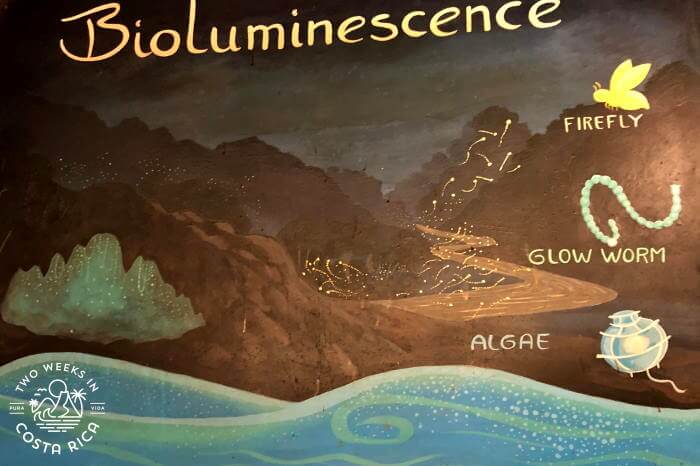
Bioluminescence in Costa Rica
While many places in the world only experience the right conditions for bioluminescent algae occasionally, some spots in Costa Rica have it very consistently.
Where to See Bioluminescence in Costa Rica
The two main places to see bioluminescence in Costa Rica are Punta Cuchillos on the Nicoya Peninsula and a bay called the Golfo Dulce on the Osa Peninsula.
Punta Cuchillos (Nicoya Peninsula)
Punta Cuchillos near the small town of Paquera is probably the most popular spot for bioluminescence tours in Costa Rica.
This small point is about ten minutes from the Paquera ferry landing. Most people get off the Puntarenas to Paquera ferry and drive right past it on their way to popular destinations on the southern Nicoya Peninsula like Tambor, Montezuma, and Santa Teresa/Mal Pais.
Punta Cuchillos is where we did a bioluminescent kayak tour, which we’ll talk about more below.
Golfo Dulce (Osa Peninsula)
The other spot for bioluminescence tours is the Golfo Dulce near Costa Rica’s Osa Peninsula. The Osa is on the very southern Pacific coast and is a more remote area.
The Golfo Dulce is known for its rich marine life so it should be no surprise that it’s a good place for seeing bioluminescence.
Kayak tours leave from the main beach in Puerto Jimenez. These are usually a combination that take you into the mangroves, let you see sunset from the water, and even give you the chance to see dolphins, which are in the bay year-round. For the bioluminescence portion, you’ll paddle along the tranquil waters to the pristine Playa Platanares Wildlife Refuge. Here is one good kayak tour option to give you an idea.
Some off-the-grid ecolodges near Golfito like the Golfo Dulce Retreat and Playa Nicuesa Rainforest Lodge also offer bioluminescent boat tours.
When to See Bioluminescence in Costa Rica
Costa Rica is an especially great place to see bioluminescence because it can be seen year-round.
The best times to see the glowing effect is when the night sky is very dark. For this reason, it’s best to avoid the days leading up to the full moon. You’ll see that many tour companies don’t offer bioluminescence tours these days because the bright moonlight makes it much harder to see the bioluminescence effect on the water. The darker, the better.
Our Bioluminescent Kayak Tour Experience
When we did the tour, we were staying in Montezuma so had to make the one hour drive up the coast to get to Paquera. The roads in this area are mostly paved but very curvy and dark. Keep that in mind if you’re planning to do the tour from Montezuma or Santa Teresa.
Tip: This area of the country is best explored with a rental car since attractions and tours are spread out. Get a discount and free extras when booking through our Rental Car Discount page.
Waiting Until Dark
Our tour began in Punta Cuchillos just as the sun was falling. At the tour company’s base camp, we were greeted with refreshments and told to just relax until it got a bit darker.
Everyone took in the spectacular sunset over Paquera Bay. As the sun sank, the green mountains of the Nicoya Peninsula grew dark in the background.
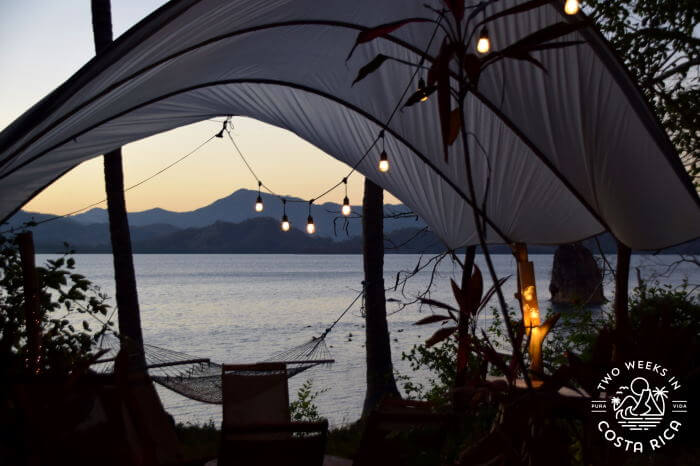
An Introduction to Bioluminescence
Our guides, Jose and Luis, soon appeared with smiles and introduced themselves. They gave us a lot of information about bioluminescence in Costa Rica and quizzed us a bit on what we already knew.
Luis was quite passionate about the bioluminescence and how each evening was a little different. He was excited for us all to experience it.
Jose added in some practical info about where we would go in the kayaks, how to see the most, and how it would be difficult to photograph the glow from a moving kayak. He said that they would try to get some photo opportunities throughout the tour, but it was best to just enjoy the experience in person.
Setting Off
Since there were about a dozen of us taking the tour that night, our guides split us into two groups for a more personalized experience. Half of us went along with Jose and the others went with Luis. We were given life jackets and paddles, and before we knew it, were led down to the water’s edge.
There, the kayaks were lined up. The guides shined their flashlights while we got in and pushed off from shore.
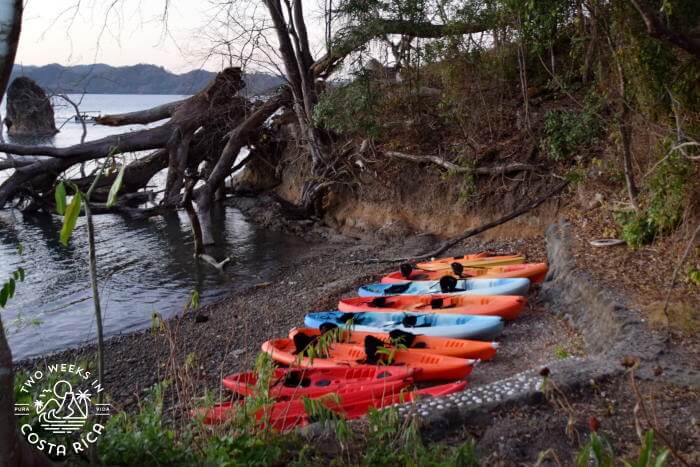
Kayaking in the dark was a very different experience. Many of us were already bumping into a half-sunken log and each other before the guides got us organized and paddling forward!
Once we all got the hang of it, though, it was quite relaxing and beautiful. The stars overhead looked amazing in the dark night, and the occasional lights from homes on the shoreline gave us a sense of where we were.
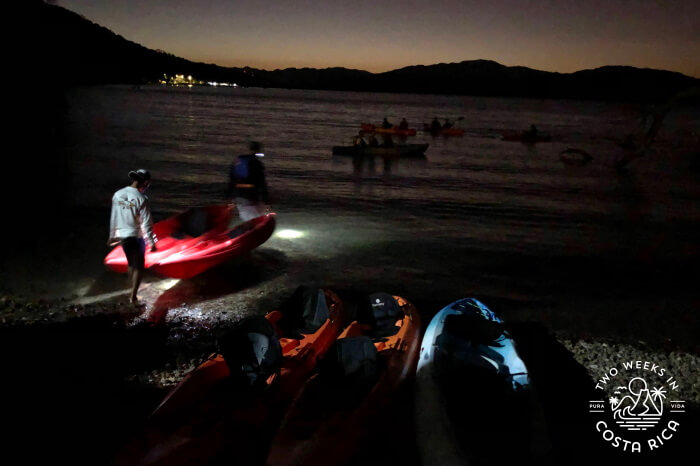
Seeing the Bioluminescence
We weren’t but ten minutes into the tour before Jose asked us to paddle closer to a small rocky island. Here, we found a very calm cove away from the current.
Jose splashed the water with his paddle. Immediately, we all saw the blue glow!
We tried it too while Jose explained that the current and wind gather the algae along rocks and in coves. When these concentrations of algae are disturbed by waves or a splash, they give off the light.
Tour Highlights
While our first experience at the small island was amazing, it got even better. As we rowed past the island, the current from our paddles made swirling blue patterns in the water. The gentle waves made by our kayaks gave a shimmering glow.
We soon approached a shoreline where the concentration of algae was even denser. A tiny splash in the water set off intense sparkles of blue light.
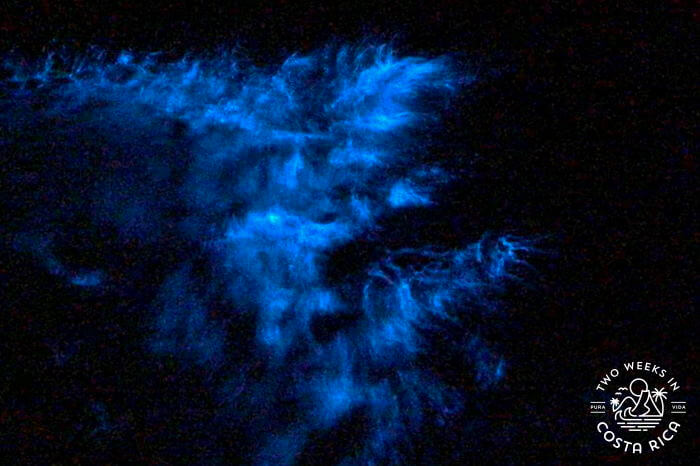
We then saw a school of fish darting through the shallow water, leaving streaks like shooting stars.
Jose told us to stop for a minute and touch the water with our hands. As we lifted our hands in and out of the sea, they came up covered with what looked like glowing blue glitter. After a minute, the lights slowly disappeared.
Photographing the Bioluminescence
Before the tour, we had done some research on taking photos of bioluminescence. It seemed that the best way was from shore, using a tripod and slow shutter speed. You then need to disturb the water and snap your picture.
From a kayak, of course, this was nearly impossible. We tried the slow shutter speed, but with the constant small movements of the kayak, we could not get a shot. Writing about this experience without getting any pictures was not an option so we needed a backup.
Our cell phone worked a little better but was still very difficult. We got a lot of plain black photos.
What eventually worked with our iPhone was to set it to take live photos. A lot of them!
Live Photo allowed us to take a picture in a short window of time, sort of like a two second video clip. You can then go in and edit which frame you want to keep. You adjust the frame until you find the one which focused on the blue glow.
Though we got a whole reel of black pictures, we did manage to get a few usable ones.
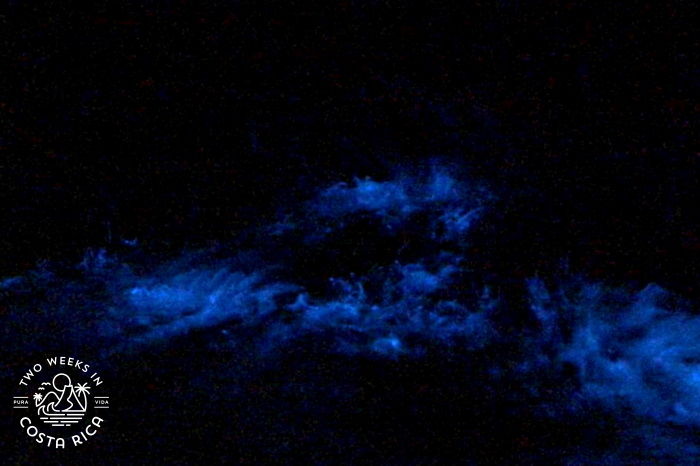
Overall, we’d recommend trying a few photos but just putting the camera or phone away so that you can enjoy the experience and remember it yourself. Once we did that, it was much more fun.
Booking a Bioluminescent Kayak Tour in Paquera
Tour Company
There are a couple of different bioluminescent kayak tours available in the Paquera area. We really enjoyed the guides we had great through Bahia Rica and highly recommend them. You can book their tour through Viator.
One other company we met out on the water had a really large and noisy group. We were glad that Bahia Rica broke us into smaller groups for a more enjoyable experience.
Duration and Cost
Tours are around 1.5 hours long and cost about $36.
Full Moon
Keep in mind that around the full moon, it can be difficult to see the bioluminescence. The darker the night sky, the better the experience.
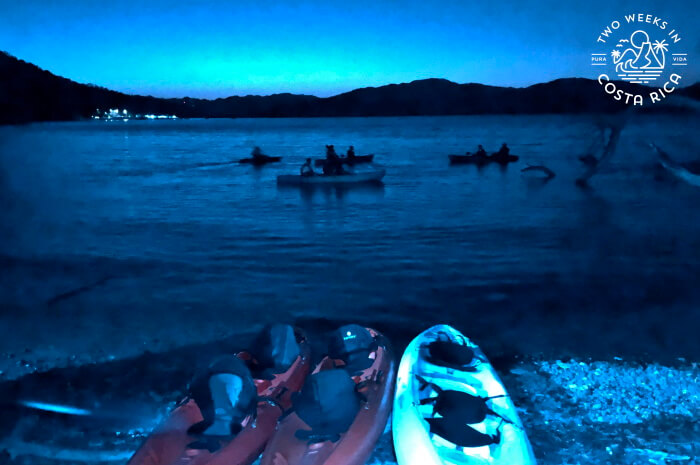
Conclusion
If you’re looking to experience Costa Rica’s bioluminescence for yourself, the Nicoya Peninsula is one of the best spots in the country. We were really surprised by how cool it was to see it in person and hope you get a chance too.
If you book a tour using the link above, we receive a small commission at no extra cost to you. Thanks for supporting our website!
Have a question about bioluminescence in Costa Rica? Ask us below.
Looking for more information to help you plan your trip? Check out these posts:
Catarata el Chorro – Another unique activity on the Nicoya Peninsula is this tidefall (waterfall that flows right into the ocean). Plan your visit with this guide.
Taking the Puntarenas-Paquera Ferry – If you are heading to the southern Nicoya Peninsula, make sure to read this post to learn about the ferry that cuts across the bay.
Santa Teresa: Costa Rica’s Trending Beach Town – Santa Teresa, farther south on the Nicoya Peninsula, has become a hot spot for tourism and digital nomads. Learn all about this trending destination with our destination guide.
Ocean Activities: For lots more fun ocean activities in Costa Rica like catamaran tours and surfing, visit our Ocean and Water Activities section.


